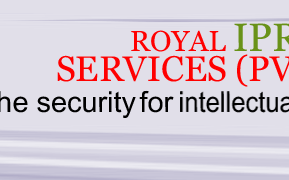| |
|
OUR
SPONSORS |
| |
|
| |
 |
| |
|
| |
 |
| |
| |
| DELTA SECURITY MANAGEMENT (PVT) LTD |
 |
No Security For Hearts Being Lost!But Try Us For Rest!!
www.roydel.com |
| |
|
|
|
| IPRs enforcement must to improve investment |
| By Mahmood Ayaz |
| |
Tackling issues at the eleventh hour has become a custom. We are least concerned when a problem arises but look for a quick solution the moment it becomes a menace.
Black marketing, drugs, black money, smuggling, corruption, unemployment, arms, counterfeiting or piracy are few problems to name.
Counterfeiting has reached startling proportions in the last decade. The economy has suffered heavily as taxes were evaded and the multinationals avoided Pakistan. People, for the fear of inferior quality products, turned to smuggled goods. The military government's documentation drive was a step in the right direction but it soon ran out of steam apparently due to strong objections from the vested interests, and probably due to the elections. The new governments will have to adopt policy on the issue for a turnaround in economic indicators.
Pakistan has some of the world's highest piracy rates because of weak laws and its enforcement. The laws generally protect intellectual property rights (IPRs) and the corporate sector knocks at the door of the justice department when these patent laws are non-existent or are ineffective. The IPRs protection, and the dealing of violation of the IPRs are two different issues but are inter-connected.
The judicial side is activated when the protection side is missing or becomes ineffective. In our case the former is more conspicuous as the government has set up a number of bodies to enforce the IPRs like the Quality Control Board, the Agriculture Prices Commission, the Patents and Design Act 1911, the Pure Food Ordinance 1960. The corporate sector is justified in asserting that despite paying huge taxes, the government agencies have virtually failed in taking action against the counterfeit mafia.
A survey of the tobacco counterfeits clearly shows that the law-enforcement agencies are either not well equipped or lack a will to take notice of the illegal activity. It is also said that the counterfeit mafia has become very strong.
Over a period of two years, hundreds of raids were conducted in a number of cities, in which merely 113 persons were booked of which only one third were punished. The total fine imposed on them was Rs27, 500 and they spent not more than 14 days in the lock-up. The counterfeiting costs the exchequer around Rs7.5 billion.
This industry alone contributes about Rs20 billion, and apathy on the part of the government would scare away prospective investors. What are intellectual property rights? These rights are awarded to individuals/organizations on their creative work, inventions, literary and artistic works, symbols, names, images, and designs used in commerce. This gives the creator the right to prevent others from making unauthorized use of their property for a limited period. The IP is categorized as the industrial property (functional commercial innovations), and artistic and literary property (cultural creations). The current technological developments are blurring, to some extent, this distinction, and some hybrid sui generis systems are emerging.
Industrial property patents: A patent is an exclusive right awarded to an inventor to prevent others from making, selling, distributing, importing or using their invention, without license or authorization, for a fixed period of time (Trips stipulates 20 years minimum from filing date). In return, society requires that the patent applicant disclose the invention in a manner that enables others to put it into practice.
This increases the body of knowledge available for further research. There are three requirements (although details differ from country to country) that determine the patentability of an invention: novelty (new characteristics which are not "prior art"), non-obviousness (an inventive step not obvious to one skilled in the field), and utility (as used in the US) or industrial applicability (as used in the UK). Utility models are similar to patents, but in some countries confer rights of shorter duration to certain kinds of small or incremental innovations.
Industrial designs: The industrial designs protect the aesthetic aspects (shape, texture, pattern, colour) of an object, rather than the technical features. The Trips require that an original design be eligible for protection from the unauthorized use by others for a minimum of 10 years.
Trademarks: These provide exclusive rights to use distinctive signs, such as symbols, colours, letters, shapes or names to identify the producer, and protect its associated reputation. In order to be eligible for protection a mark must be distinctive of the proprietor so as to identify the proprietor's goods or services. The main purpose of a trademark is to prevent customers from being misled or deceived. The period of protection varies, but a trademark can be renewed indefinitely. In addition many countries provide protection against unfair competition, sometimes by way of preventing misrepresentations as to trade the origin regardless of the registration of trademark.
Geographical indications: GIs identify the specific geographical origin of a product, and the associated qualities, reputation or other characteristics. They usually consist of the name of the place of origin. For example, food products sometimes have qualities that derive from their place of production and local environmental factors. The geographical indication prevents unauthorized parties from using a protected GI for products not from that region or from misleading the public as to the true origin of the product.
Trade secrets: They consist of commercially valuable information about the production methods, business plans, clientele, etc. They are protected as long as they remain secret by the laws that prevent acquisition by the commercially unfair means and the unauthorized disclosure.
Copyright: The copyright grants exclusive rights to the creators of original literary, scientific and artistic works. The copyright only prevents copying, not independent derivation. The copyright protection begins, without formalities, with the creation of the work, and lasts (as a general rule) for the life of the creator plus 50 years (70 years in the US and the EU). It prevents unauthorized reproduction, public performance, recording, broadcasting, translation, or adaptation, and allows the collection of royalties for authorized use. The computer programmes are protected by the copyrights, as software source and code have been defined as a literary expression.
Sui generis systems: Integrated computer circuits: It is a specific sui generis form of protection for the design of integrated computer circuits. As the inventive step is often minimal and originality is the only requirement, the minimum period of protection under the Trips is 10 years.
Plant breeders' rights: The plant breeders' rights (PBRs) are granted to breeders of new, distinct, uniform and stable plant varieties. They normally offer protection for at least 15 years (counted from granting). Most countries have exceptions for farmers to save and replant seeds, and for the use of protected materials for further breeding.
Database protection: The EU has adopted legislation to provide sui generis protection in respect of databases, preventing unauthorized use of data compilations, even if not original. Exclusive rights to extract or utilize all or a substantial part of the contents of the protected database are granted. Pakistan had been on the "Special 301" Watch List since 1989 due to the widespread piracy, especially of the copyright materials, and the failure to implement its patent mailbox obligations under the Trips agreement. The government has undertaken the task of rewriting legislation in the areas of copyrights, patents, and trademarks and has taken steps to strengthen enforcement, including raids on the pirated-video rental shops and computer software outlets.
Patents: The laws protect only process patents for duration of 16 years, although the government is committed to eventually offer product patents in accordance with its WTO obligations. Foreign companies have complained that the law, permitting infringers to continue freely manufacture illegal products does not adequately protect the right of the patentee.
Trademarks: There have been occasional instances of the trademark infringement, involving a range of products such as toys, playing cards, tobacco and industrial machinery. In August 1994, the government issued the new drug labelling rules requiring the generic names of the substances to be printed with at least equal prominence as that of the brand name. This rule serves to dilute in the minds of consumers on the existing difference in quality, efficacy, and safety, and incorrectly implies the total inter changeability and equality among different products.
Copyrights: The violation of intellectual property rights in Pakistan are most common in the area of copyrights, where the piracy levels are exceptionally high. The market for imported computer software has remained nearly 95 per cent pirated (multinational firms and other international agencies are the only users of genuine software), while the US industry has estimated that the piracy rate for the videos has declined to around 80 per cent.
The government, however, has recognized the need for better protection of software in order to establish a Pakistani information technology industry. It has called for the regulations to protect the intellectual property, promote industry standards, and encourage electronic commerce. As a result of the strengthened law enforcement some video outlets are taking steps to offer legitimate products. Foreign industries too, have reported some improvement in Pakistan's anti-piracy programme. Recently, raids were conducted on about 50 computer software outlets in Karachi at the behest of the Business Software Alliance. There have also been recent reports of the law enforcement agencies sealing numerous videocassette shops in Karachi for a number of days, with the dealers seeking a three-month reprieve to dispose of their existing stocks.
Special police anti-piracy task forces have also been established in different parts of the country.
Nevertheless, the US industry continues to express concern over the high rate of video piracy in the form of back-to-back copying of videos in video outlets.
This infringing of the IPRs has put a heavy burden on the national exchequer. Pakistan annually losses billions in revenue. It is high time that the government realised the importance of enforcing the intellectual property rights and took steps for its enforcement. …….Published in Daily Dawn
|
| |
|
| |
|
|
 |












